TLDR Hair follicle development and microbes help regulatory T cells gather in newborn skin.
The study demonstrated that hair follicle (HF) development played a crucial role in the accumulation of regulatory T cells (Tregs) in neonatal skin, where these cells localized to HFs, which are primary reservoirs for skin commensals. Germ-free neonates exhibited reduced skin Tregs, indicating that commensal microbes enhanced Treg accumulation. The researchers identified Ccl20 as a HF-derived, microbiota-dependent chemokine, with its receptor Ccr6 being preferentially expressed by Tregs in neonatal skin. The Ccl20-Ccr6 pathway was shown to mediate Treg migration both in vitro and in vivo. Thus, HF morphogenesis, commensal microbe colonization, and local chemokine production collectively facilitated the recruitment of Tregs into neonatal skin, establishing a tissue Treg niche early in life.
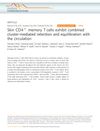 155 citations
,
May 2016 in “Nature communications”
155 citations
,
May 2016 in “Nature communications” Memory T cells in the skin balance staying put and moving into the blood, clustering around hair follicles, and increasing in number after infection.
245 citations
,
October 2015 in “Nature medicine” Hair follicle-derived IL-7 and IL-15 are crucial for maintaining skin-resident memory T cells and could be targeted for treating skin diseases and lymphoma.
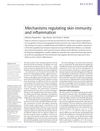 610 citations
,
April 2014 in “Nature Reviews Immunology”
610 citations
,
April 2014 in “Nature Reviews Immunology” The document concludes that understanding how the skin's immune system and inflammation work is complex and requires more research to improve treatments for skin diseases.
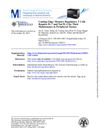 140 citations
,
March 2013 in “The journal of immunology/The Journal of immunology”
140 citations
,
March 2013 in “The journal of immunology/The Journal of immunology” Memory regulatory T cells need IL-7, not IL-2, to stay in peripheral tissues.
286 citations
,
June 2012 in “Nature Immunology” Hair follicles help attract immune cells to the skin during stress.
35 citations
,
March 2012 in “Journal of dermatological science” The document concludes that advanced methods show the presence of P. acnes in acne lesions but do not prove it causes acne.
293 citations
,
September 2004 in “Development” WNT signaling is crucial for starting mammary gland development.
14 citations
,
December 1991 in “PubMed” The document explains how hair follicles develop in humans.
 110 citations
,
July 2017 in “Immunology”
110 citations
,
July 2017 in “Immunology” Skin's Regulatory T cells are crucial for maintaining skin health and could be targeted to treat immune-related skin diseases and cancer.
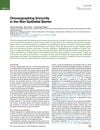 57 citations
,
March 2019 in “Immunity”
57 citations
,
March 2019 in “Immunity” The document concludes that the skin's immune system is complex, involving interactions with hair follicles, nerves, and microbes, and can protect or cause disease, offering targets for new treatments.
10 citations
,
January 2019 in “International Immunology” Immune cells help keep skin healthy and repair it, but imbalance can cause disease.
 18 citations
,
November 2020 in “Frontiers in Cell and Developmental Biology”
18 citations
,
November 2020 in “Frontiers in Cell and Developmental Biology” Inflammation plays a key role in activating skin stem cells for hair growth and wound healing, but more research is needed to understand how it directs cell behavior.
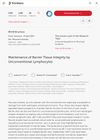 9 citations
,
April 2021 in “Frontiers in Immunology”
9 citations
,
April 2021 in “Frontiers in Immunology” Unconventional lymphocytes are important for quick immune responses and healing of skin and mucosal barriers.







